
Military History - Battle of Xuân Lộc, Vietnam War, April 9-21st, 1975
ARVN soldiers fighting around Xuan Loc
BACKGROUND
1972-1974
In the mid 1970s, South East Asia was in turmoil. Vietnam was a nation split in half, into the Republic of Vietnam in the South and the Democratic Republic of Vietnam in the North. They had been involved in a conflict together for decades. During the 1960s and early 1970s, the United States of America had been directly involved in the conflict, supporting the South's Army of the Republic of Vietnam (ARVN). After nearly 10 years of fighting and hundreds of thousands of American casualties, the governments of the USA and ARVN concluded peace talks which had been secretly ongoing in Paris for many years. The talks would order a cease-fire between North Vietnamese and US Military personnel and drew up a plan for total American withdrawal from South Vietnam, with the exception of Embassy guards and other such non-combat personnel. This agreement also ended the American Advisory programme, which had seen US servicemen training the ARVN in modern tactics and the use of military equipment for nearly 20 years. Also included in the accords, were limitations on US Airforce combat operations and US Navy patrols near either Vietnam. US Congress also voted to stop sending South Vietnam military aid around this time.
This accord left the Army of the Republic of Vietnam (South) in a difficult position. Under-funded and poorly trained, they had relied on US aid and supplies for years. Almost exclusively equipped with American arms and material, the ending of training and armament from America meant that the ARVN would have to very quickly learn how to produce its own military equipment and train new pilots, armoured vehicle crews and artillerymen within a rapid timeframe.
The threat of full-scale invasion from North Vietnam loomed over the South Vietnamese government like an ever present spectre.
Both nations utilised the Ceasefire. The South began a large conscription and training programme to bolster it's forces, also allegedly spending large amounts of civil aid money on purchasing ammunition. The North started re-organising its military. Pulling many troops out of South Vietnam where they had acted as guerrillas, divisions were reinforced and re-equipped with weapons fresh from the Soviet Union and People's Republic of China. The Ho Chi Minh Trail - a network of hidden pathways stretching from North Vietnam through Laos and Cambodia before reaching South Vietnam - was also repaired and upgraded. The ceasefire remained in place for nearly a year, with small skirmishes still being fought.
On 4th January, 1974, President Thieu of South Vietnam declared the Paris Peace Accords void, after 55 ARVN soldiers were killed in clashes with Communist guerrillas.

1974-1975
During the 74-75 period, multiple clashes between ARVN and PAVN forces erupted, much the same as the North had fought the Americans before. Small engagements, utilising hit and run tactics against the slower Southern troops. The North was attempting to buy time until they had stockpiled enough equipment to launch a full scale invasion of the South. The North were concerned with threats the Americans had made while signing the Peace Accords, in which they had sworn to defend South Vietnam and re-enter the war if the North showed overt hostile activity against another sovereign nation. However, with a shifting political landscape in America, North Vietnam's First Secretary Lê Duẩn approved a test of American resolve by launching a limited offensive into neighbouring Cambodia. When, after a few weeks of fighting, the United States did not intervene; it was decided that the Americans were no longer a threat in Vietnam and final plans were prepared for a large offensive South.
The South Vietnamese government was plagued with issues at this time. While they had stockpiled vast reserves of weaponry - 1,400 aircraft, three times as much artillery as the North and twice the amount of armoured vehicles - an oil crisis, coupled with ammunition and spares shortage meant that the majority of these weapons were not ready for use. In fact, there were allegedly 3 full squadrons of A-37 Dragonfly Ground Attack Planes sat in Nha Trang airbase until the end of the war.
On December 13th, 1974, North Vietnamese troops attacked Route 14 in South Vietnam - an arterial highway in the border region of Phuoc Long Province. In under a month, the provincial capital of Phuoc Binh fell. Surprised by the speed of the North Vietnamese, their brazen use of armour and a lack of US response, the South Vietnamese started to see an eroding of morale which was endemic to the end of the war. The North Vietnamese Army increased the speed of their campaign, which they had intended to last several years. In the Spring of 1975 they launched a full-scale offensive across the Central Highlands.
Several units of the ARVN fought bravely, but the lack of American intervention was affecting morale severely. Defeatism was spreading through the ranks. Entire companies would abandon their positions with no regard to the plans which existed. The ammunition shortage began to be felt after Da Nang airbase was captured. Some companies were limited to 3 rounds of artillery a day.
President Thieu had placed himself in charge of the military planning for the South Vietnamese Army from the onset, and had continuously made rash and contradictory decisions. One day, he would order a company to stand and fight and then a few hours later would demand to know why they were holding a foolish position and not falling back. Forces dug in to key defensive positions were ordered to abandon them to secure stretches of open ground. This political turmoil led way to countless acts of insubordination and desertion. It also led to several assassination attempts on Thieu. On January 23rd, an ARVN officer fired his pistol at Thieu, failing to hit him. On April 4th, Independence Palace - the Presidential and Governmental offices - were bombed by a South Vietnamese pilot in his F-5 Tiger. It later turned out that the pilot was in fact a member of the Viet Cong, the Communist guerrilla force backed by North Vietnam, and had infiltrated the Air Force in 1969. This fuelled Thieu's suspicion of his military staff, leading to arrests of his senior commanders.
Meanwhile, the North Vietnamese continued to push their way South. City after city and province after province fell to their forces as South Vietnamese soldiers fled before them. Eventually, only a few cities were left before the South Vietnamese capital of Saigon. One of these cities was Xuan Loc. Thieu ordered his reserves to Xuan Loc and began phoning the US Embassy almost hourly, desperate to convince President Gerald Ford to mobilise the US Navy Group in the South China Sea.
With ARVN troops entrenched in Xuan Loc and PAVN forces approaching the city, the stage had been set for the final major battle of the Vietnam War.
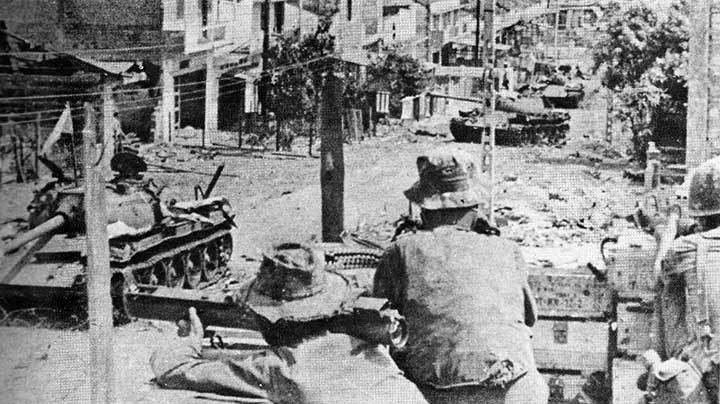
Communist forces seize An Lac
ORDER OF BATTLE
Army of the Republic of Vietnam - ARVN (South), Commanded : General Le Minh Dao
-
Initial Defenders
-
ARVN 18th Infantry Division
- 43rd Infantry Regiment
- 48th Infantry Regiment
- 52nd Infantry Regiment
- 5 Armoured Brigades, assembled from remnants of old forces
-
4 Regional Force Battalions
- 340th, 342nd, 343rd, 367th
-
2 Artillery units, consisting 42 guns
- 181st & 182nd Artillery Battalions
- 2 companies of Civilian Self-Defence Force
-
ARVN 18th Infantry Division
-
Reinforcements (arriving April 12th)
- 1st Airborne Brigade
-
3 Armoured Brigades
- 315th, 318th, 322nd
- 5th Infantry Division's 8th Task Force
- 33rd Ranger Battalion
- Air Support provided by 5th & 3rd Air Force Divisions.
In all, this totalled to 25-30,000 men, with 12,000 estimated within Xuan Loc itself.
People's Army of Vietnam - PAVN (North), Commanded : Hoang Cam
-
PAVN 4th Army Corps
- 6th Infantry Combat Division
- 7th Infantry Combat Division
- 341st Infantry Combat Division
-
Supported by :
- 71st Anti-Aircraft Regiment
- 24th & 25th Combat Engineering Regiments
- 26th Communications Regiment
- 2 Armoured Battalions
- 2 Artillery Battalions
- 2 Provincial Infantry Battalions (Viet Cong)
This totalled 40,000 men, with 20,000 estimated to be within Xuan Loc itself.
THE BATTLE
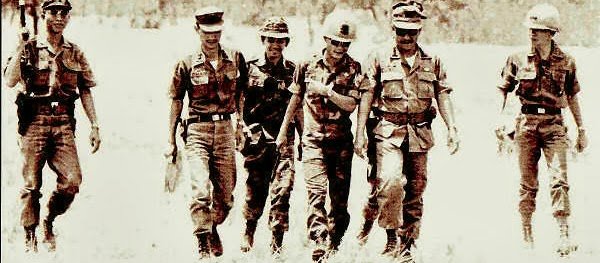
Le Minh Dao (3rd from Right) and his Command Team


The Battle of Xuan Loc was fought in and around the town by the same name. It was a bastion of the ARVN and the key part of the final defensive line of South Vietnam. Lee Minh Dao's plan was a fairly straightforward one. In an attempt to but time against the North Vietnamese, he deployed his men around the town, making use of two natural chokepoints presented by the terrain : the Nui Soc Lu - Doi Mong Ngua - Nui Ma hill and valleys to the North West, and the narrow passage between the Suoi Ret and Song Vong rivers to the North East. With the towns of Bien Hoa to the West and Binh Tuy to the East both still in ARVN control, any PAVN attack was expected to come from these two corridors. These two chokepoints allowed Lee Minh Dao to focus his defence on the 5 main roads which lead into Xuan Loc. Fortifications were raised and armoured vehicles dug in at key points throughout the area.
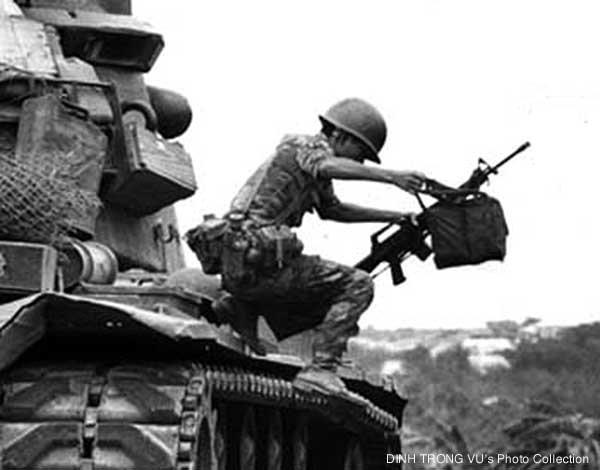
Hoang Cam's plan of attack almost mirrored Dao's plan for defence. Two strong thrusts would attempt to push through the ARVN defensive lines and advance on the city. The 341st Infantry Division would assault the valleys, and the 7th would attack between the rivers. Both offered direct routes into the centre of Xuan Loc, with heavy duty highways providing easy transportation to Saigon once the city was dealt with.
The approaching PAVN units began to engage the dug-in defenders of Xuan Loc a few days before the battle began in earnest. With elements of destroyed formations being used as 'roadblocks' against the PAVN, Dao managed to buy the defenders 4 days of respite before Cam launched his offensive on the city.
At 0540 on April 9th, 1975, the PAVN 4th Army Corps began shelling ARVN positions around Xuan Loc. After approximately an hour of bombardment, the 341st Infantry Division attacked an ARVN communications centre to the North of the city. It took an hour of heavy fighting before the communications centre and a nearby police station fell. This dogged resistance allowed the ARVN 52nd Task Force to counter-attack the position, effectively halting the 341st's advance. To the east, the order was given for the 7th Infantry Division to attack across open ground without any armoured support. Unsurprisingly, the assault failed; and subsequent efforts to provide the Communist soldiers with armoured support failed, with 3 tanks destroyed and 5 being forced to withdraw.
With both attacks being stalled, Cam launched his surprise offensive. He had managed to march the 6th Infantry Division past Xuan Loc, and had them attack from the South. Dao's men held their ground, but due to the nature of his battle plan, the Western approaches to Xuan Loc came under attack from the 6th Division with supply and support convoys having to fight their way clear.
The PAVN 209th and 270th Infantry Regiments took advantage of a weaker section of the southern defensive line and stormed into the perimeter, capturing the ARVN 18th Infantry Divisions Headquarters. The remainder of the day saw ARVN counter-attacks at the exposed PAVN flanks to slow their advance.

Fighting in ruins at Xuan Loc
The days of April 10th and 11th saw little change around Xuan Loc. PAVN forces would advance, only to be counter-attacked by ARVN units and repulsed. The 209th & 270th continued to fight over the Gia Lien Bridge but faced stiff resistance. In the North, The ARVN 52nd Task Force was reinforced by the 43rd Infantry Regiment and the 322nd Armoured Brigade, forcing the PAVN 341st's advance to a standstill. During these 48 hours, the South Vietnamese Airforce more than 200 bombing sorties.
On the 12th, the South Vietnamese government decided to send more troops to Xuan Loc. The already limited reserves found their number dropped drastically as the ARVN 1st Airborne Brigade, 33rd Ranger Battalion, 8/5th Infantry Division, 8th Artillery, 315th and 318th Armoured Brigades were all committed to the defence. In terms of fighting, the large offensives had began to lose steam. They made little headway against the dug-in ARVN infantry and the ARVN Air Force. On the 12th, fighter-bombers from Bein Hoa and Tan Son Nhat flew between 80-120 combat sorties. A pair of C-130 Hercules transport aircraft were used to drop two CBU-55 Fuel Air Explosives on the town of Xuan Vinh, causing widespread devastation and killing around 200 PAVN soldiers.
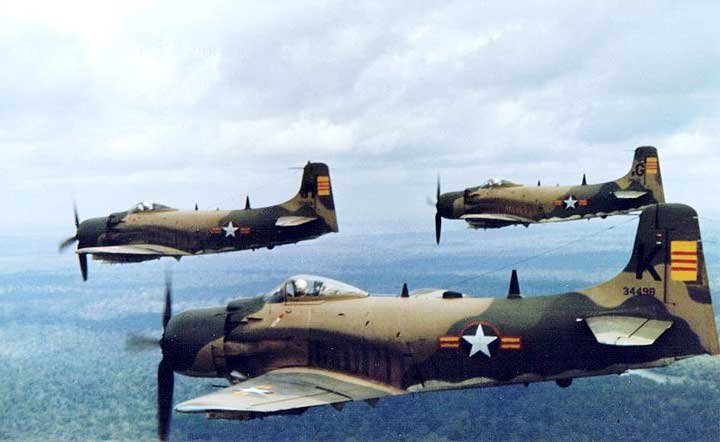
VNAF Figher Bombers
The 13th of April saw the large PAVN offensives stop almost altogether. Instead, smaller skirmished and company sized actions continued on. Frustrated with the lack of progress, General Tran Van Tra, commander of the Viet Cong, arrived at the headquarters of the 4th Corps and began to change aspects of the offensive plan. He identified that Dau Giay was the weakest point in Xuan Loc's defensive line, and ordered units to begin acting as blocking forces along the two major highways leading into Xuan Loc from allied positions - a tactic which was to severely hinder the flow of reinforcements and materiel into the beleaguered city. Thieu, President of South Vietnam, declared that the ARVN had "recovered it's fighting ability" upon hearing of the diminished attacks on Xuan Loc.
Unidentified ARVN soldiers at Xuan Loc
On the 15th, Tra's new plan came into action. The units around Highway 1 and Highway 2 began to tighten the noose around Xuan Loc, effectively cutting the roads. To the North and East, PAVN units resumed their large scale attacks, but this time without major artillery support. Instead, the artillery was shelling Bien Hoa Airbase, preventing a large number of ARVN planes from taking off. While aircraft from Tan Son Nhut continued to support the ARVN forces in Xuan Loc, an offensive closer to Tan Son Nhut diverted many of the flights in the air. The first major disaster at Xuan Loc happened on the 15th, as the PAVN 6th Infantry Division and 95B Infantry Regiment defeated the ARVN 52nd Task Force and 13th Armoured Squadron to the West of Xuan Loc and captured Dau Giay.
The following day, the 16th, Dao ordered the ARVN 8th Task Force and 3rd Armoured Brigade to retake Dau Giay. These men met the same fate as their comrades the day before, with large numbers of casualties being suffered they were forced to withdraw.
During the 16th and 17th, many ARVN units on the perimeter found themselves under attack from all sides as PAVN infantry infiltrated the defensive line around them. The 43rd and 48th Infantry Regiments, and the 1st Airborne Brigade, suffered major casualties as a result of this. They were ordered to consolidate their defences towards Xuan Loc.
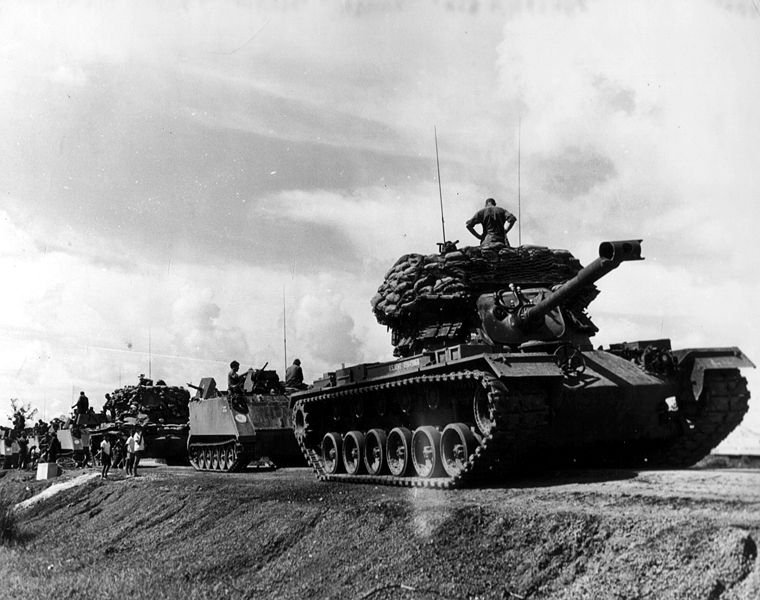
An ARVN convoy outside of Xuan Loc
The 18th saw the PAVN focus their attacks on the outlying townships and hamlets leading to Xuan Loc. Each small collection of buildings fell after being doggedly defended. The morning of the 19th found Xuan Loc nearly completely surrounded and cut off. The South Vietnamese General Staff ordered Lee Minh Dao to abandon the position and evacuate as many members of the 18th Division as he could towards Bien Hoa in preparation for another defensive line. On the 20th, under cover of heavy rain, South Vietnamese soldiers and civilians began to leave Xuan Loc. The convoy numbered some 200 military vehicles. The remainder of the battered 1st Airborne Brigade was the last to leave the city. They remained until 0400 on the 21st, waiting for their 3rd Company to make it to Xuan Loc. The 3rd Company never did, having been trapped and destroyed in the hamlet of Suoi Ca.
The evacuation at Xuan Loc.
By the end of the 21st, the North Vietnamese Army occupied Xuan Loc. Their path to Saigon was clear.

North Vietnamese soldiers parade a captured M48 Patton Tank
AFTERMATH

South Vietnamese civilians attempt to climb into a CH-47 Chinook Helicopter
The planned defence of Bien Hoa never happened. The fall of Xuan Loc crumbled what was left of ARVN morale. With barely any reserves left, President Thieu resigned after the General Assembly agreed that he should be held accountable. The ARVN units began to withdraw towards Saigon, those who remained in uniform. Many changed into civilian clothes in an attempt to flee the North Vietnamese Communists. As the North Vietnamese Army approached Saigon, the US Embassy began to evacuate its personnel. There were scenes of pandemonium at Tan Son Nhut Airport as people tried to climb onto planes as they taxied onto the main runway. South Vietnamese Airforce helicopter pilots commandeered their helicopters, picked up family members and flew out to sea, hoping for salvation from the US Navy. Those who did not run out of fuel found their salvation.

Soldiers and Civilians cling onto a Huey

The deck of a US Aircraft Carrier. All helicopters seen here were VNAF.
Xuan Loc saw the end of the nation of South Vietnam. Saigon fell to the North and the country was unified under a Communist Dictatorship, as it remains today.
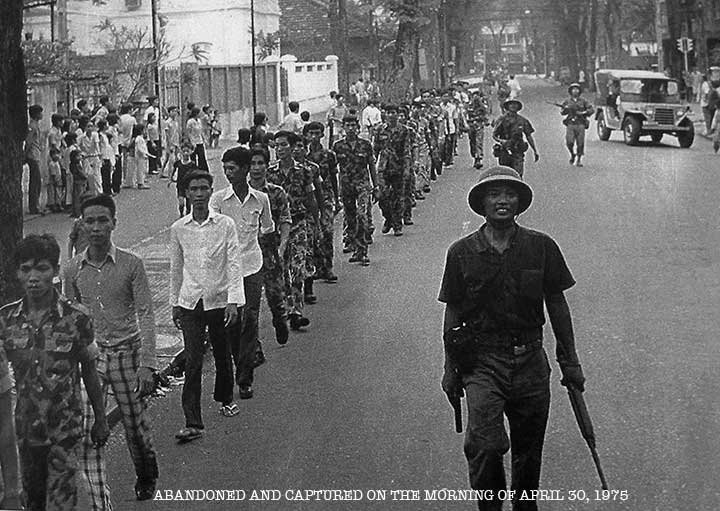
Captured ARVN soldiers are paraded through Saigon, renamed Ho Chi Minh City.
Normally, in this part of the article I describe how you can re-create the battle written about here. The Battle of Xuan Loc is incredibly difficult to quantify in the same manner, their were vast issues surrounding the ARVN morale and supplies that would be nigh on impossible to re-create, especially with the limited numbers we are able to play with. Regardless, I will do my best to give an abstract scenario that can be tailored to fit nearly any map and any force.
Players should, ideally, be split into 3 forces comprising of 2 squads each - all holding a vital route into an urban area. Ammunition and supply restrictions should be enforced, with resupply points available in a central defensive location - a key building in the centre of the urban area which can be considered the primary objective. Players should, ideally, have access to superior technology. Perhaps a few IFVs or MBTs crewed by AI dug into the area, ensure that they don't have the ability to move. Let the players call in AI air support, they need to begin with the advantage. This should be faced with increasing numbers of hostiles, including more and more armoured vehicles which will compound the supply and logistical situation. The idea would be for the players to survive long enough to allow reinforcements or supplies to arrive to enable them to continue the fight, while preventing enemy forces from reaching the command centre. If hostile forces do reach the command centre, consider it a mission failure. I think heliborne or airborne enemies should be avoided in this scenario, to prevent AI avoiding player defences.
I hope you enjoyed this article, if you want to read more you should check out the vnafmamn article on Xuan Loc, and watch the final episode on Ken Burns documentary on Vietnam.
Edited by Sarissa
-
 1
1
-
 3
3


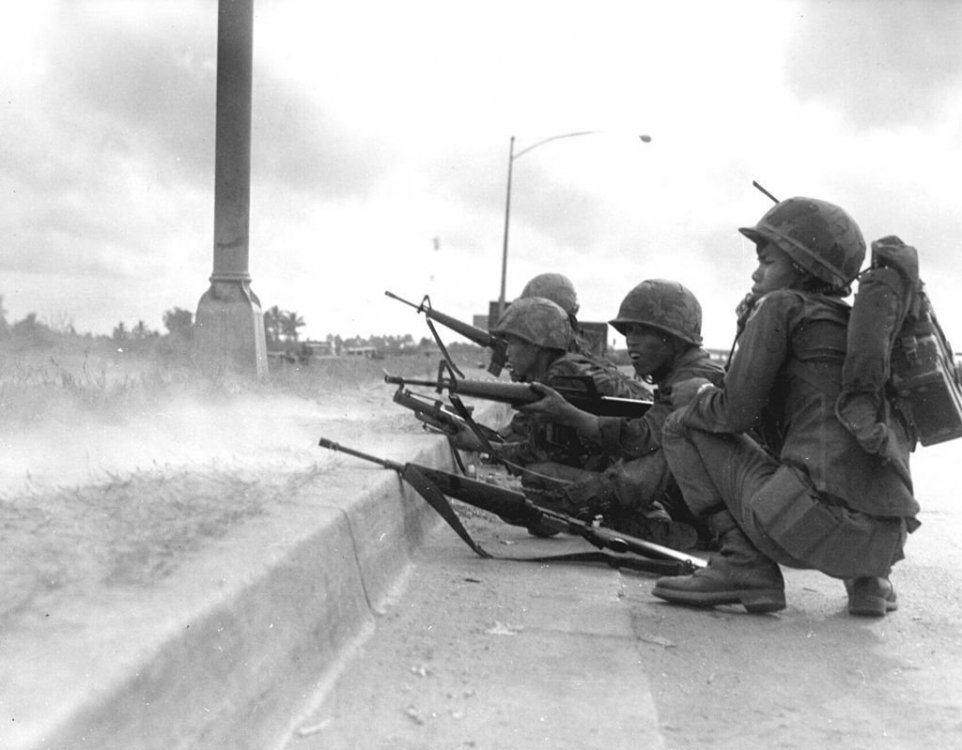
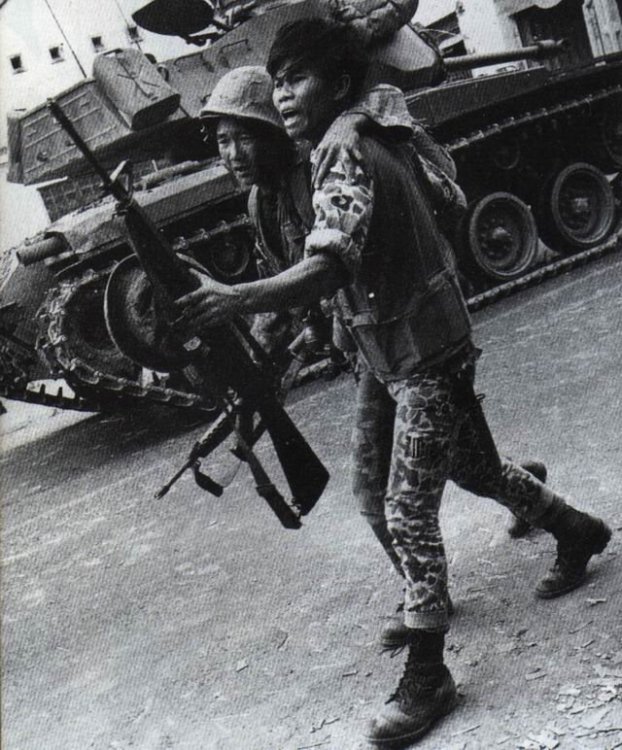
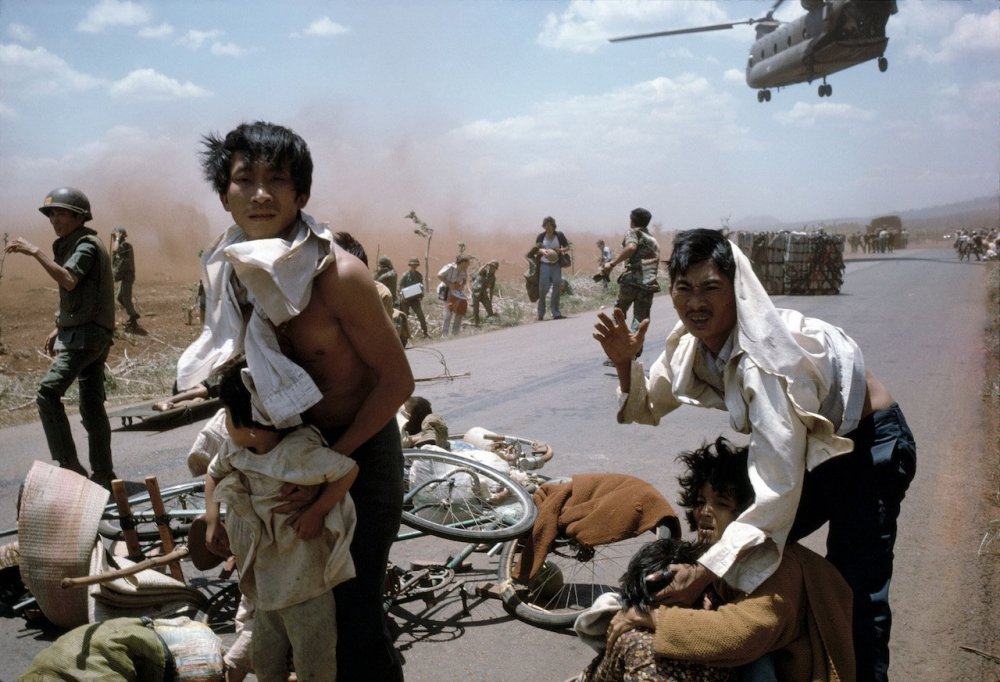




Recommended Comments
Join the conversation
You can post now and register later. If you have an account, sign in now to post with your account.
Note: Your post will require moderator approval before it will be visible.